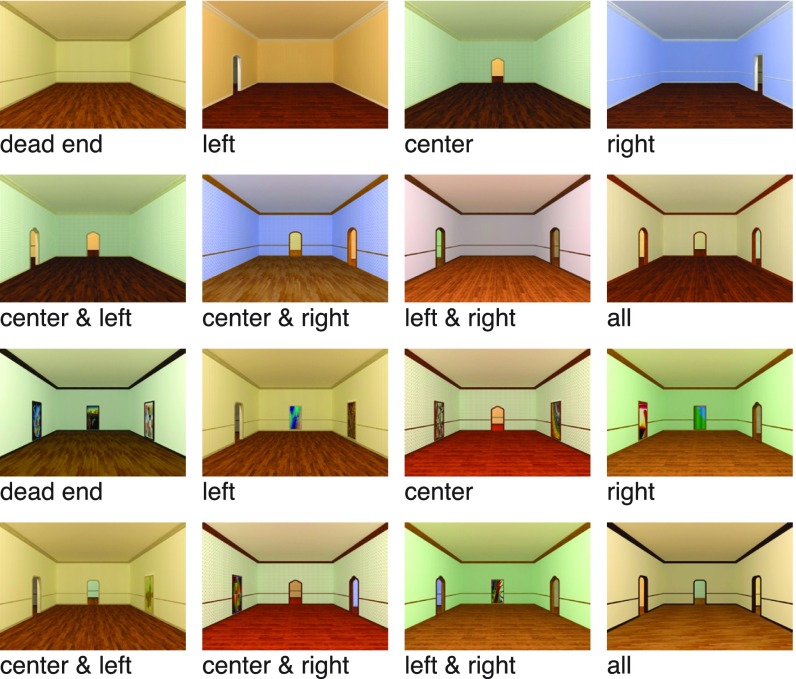Fig. 1.
Examples of artificially rendered environments used as stimuli in Exp. 1. Eight navigational-affordance conditions were defined by the number and position of open doorways along the walls. For each condition, we created 18 aesthetic variants that differed in surface textures and the shapes of the doorways (one shown for each condition), and for each of these aesthetic variants, we created one stimulus in which walls with no exit were blank (Top two rows) and one stimulus in which walls with no exit contained an abstract painting (Bottom two rows).

